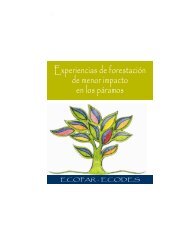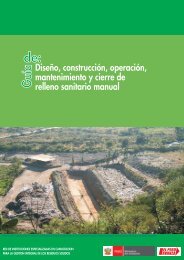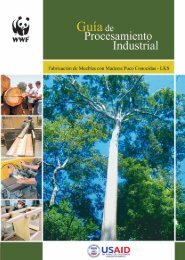Create successful ePaper yourself
Turn your PDF publications into a flip-book with our unique Google optimized e-Paper software.
2 I 8 Bulletin American Museum of Natural History. [Vol. XX,<br />
and since the aforesaid Vicars and Curates should take care<br />
that such abuses and offenses be not committed but punished,<br />
We Ordain that the said Vicars and Curates take particular<br />
pains in that the said excesses be remedied through preaching,<br />
and that they punish those who commit them." I<br />
The "Exhortation and Instruction" contains the further<br />
statement:<br />
"But the chief abuse committed in this is that of disinterring<br />
and taking away the dead from the church and carrying<br />
them to the Machais or burial places which they have in<br />
the fields of their ancestors, and (which) in some parts they call<br />
Zamay signifying sepulchre of rest, and (the act of) dying they<br />
call Zamdrcan, (or) Requievit. And when asked why they<br />
do it they say, that it is Cuyaspa, for the love they have (to<br />
them) for they say, that the dead are with much pain in<br />
church, loaded with earth, while in the fields, being in the<br />
open air and not buried, they are more at rest.<br />
" It should be noted (as important) that in no manner they<br />
be allowed to bury in vaults." 2<br />
These decrees of the ecclesiastic authorities establish the<br />
fact that, as late as one-hundred and sixteen years after the<br />
first landing of Spaniards on the Peruvian coast and onehundred<br />
and eleven years after the foundation of the city of<br />
Lima, not only did the indians still bury their dead according<br />
to primitive customs as often as possible, but took out those<br />
whom they had been obliged to inhume after christian rites,<br />
to rebury them at such places and with such ceremonies as<br />
their original creed and beliefs taught them to perform.<br />
Constituciones Synodales del Arwobispado de los Reyes en el Pivv. (Lima, 1722, the<br />
Cncie was held under the auspices of Archbishop Fernando Arias de Vgarte, - Titulo<br />
de: Sepulturis, Cap. IV, pag: 26.): "Para que los Curas, y vicarios pongan mucho<br />
cuidacdo en qute los Indios no desentierren de las Iglesias los cuerpos de sus difuntos,<br />
para llevarlos a sus Malquis, sepulturas antiguas."<br />
Exortacion (folio 47): " Pero el mayor abuso que en esto ay es el desenterrar, y<br />
sacar los muertos de las Iglesias, y lleuarlos A los Machais, que son las sepulturas que<br />
tienen en los campos de sus antepasados, y en algunas partes llaman Zatnay, que quiere<br />
decir sepulcro del descanso, y al mismo morir Ilaman Zamarcan, requieuit. Y preguntados<br />
porque lo hacen? dicen, quo esC-Cyapa, por el amor que les tienen, porque dicen,<br />
que los muertos estan en la Iglesia con mucha pena apretados c6 tierra, y en i el capo,<br />
cotno estan en el ayre, y no en terrados, estan c6 mas descanso. A se de aduertir (como<br />
cosa que importa) que de ninguna manera se consienta que se entierren en bouedas.<br />
The term " b6veda, ' or vault, is to-day applied on the coast to subterraneous indian<br />
sepultures. But it must- not be taken literally, for the underground chambers are not<br />
arched. They are merely cells, or rooms, below the surface in the sand, covered sometimes<br />
with reeds. supported by sticks or rough timber in general, and the sides protected<br />
against caving-in either by a lining of Adobe or a thin stone-wall. Zamani (also<br />
written Camani) means "rest." Torres Rubio, Arte y VocaIulario, to die is: Huanuni<br />
(f. 134.)-The terms are not the same in every Quichua speaking community.








